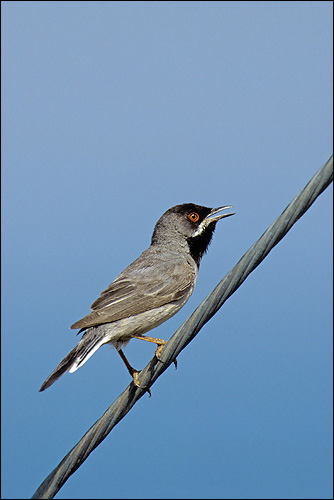Ruppell’s Warbler (Sylvia rueppelli)
In the small south-eastern corner of Europe where the Rüppell’s Warbler occurs, it is one of the very earliest migrants to arrive in the spring. Some males turn up in the first week of March, and the rest come before the end of the month, setting up their territories by vigorous singing and by a zigzagging song-flight. The females arrive about 10 days after the males, amidst this burst of territorial activity.
The Rüppell’s Warbler is a member of the Mediterranean scrub-loving Sylvia group, overlapping with, for example, the Sardinian, Orphean and Subalpine Warblers. In contrast to the rest it occurs almost entirely in very dry, rugged, undulating terrain, and needs a combination of rocks and low thorny scrub to suit its requirements, singing regularly from both. It ranges to higher elevations than most of the rest, up to 1600 m, and often occurs along ravines and gullies. It usually forages within the canopy of a bush or low tree, keeping out of sight.
In keeping with other Sylvia warblers, the males build several unlined “cock” nests for the purposes of display. This habit seems to be more developed in Rüppell’s Warblers than several other species, although few detailed studies of this species have been made. The nest itself is placed between 45 cm and 75 cm above ground, in thick, thorny scrub.
After breeding, Rüppell’s Warblers migrate south to winter in North-east Africa between Chad and the Sudan.

